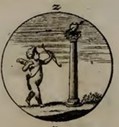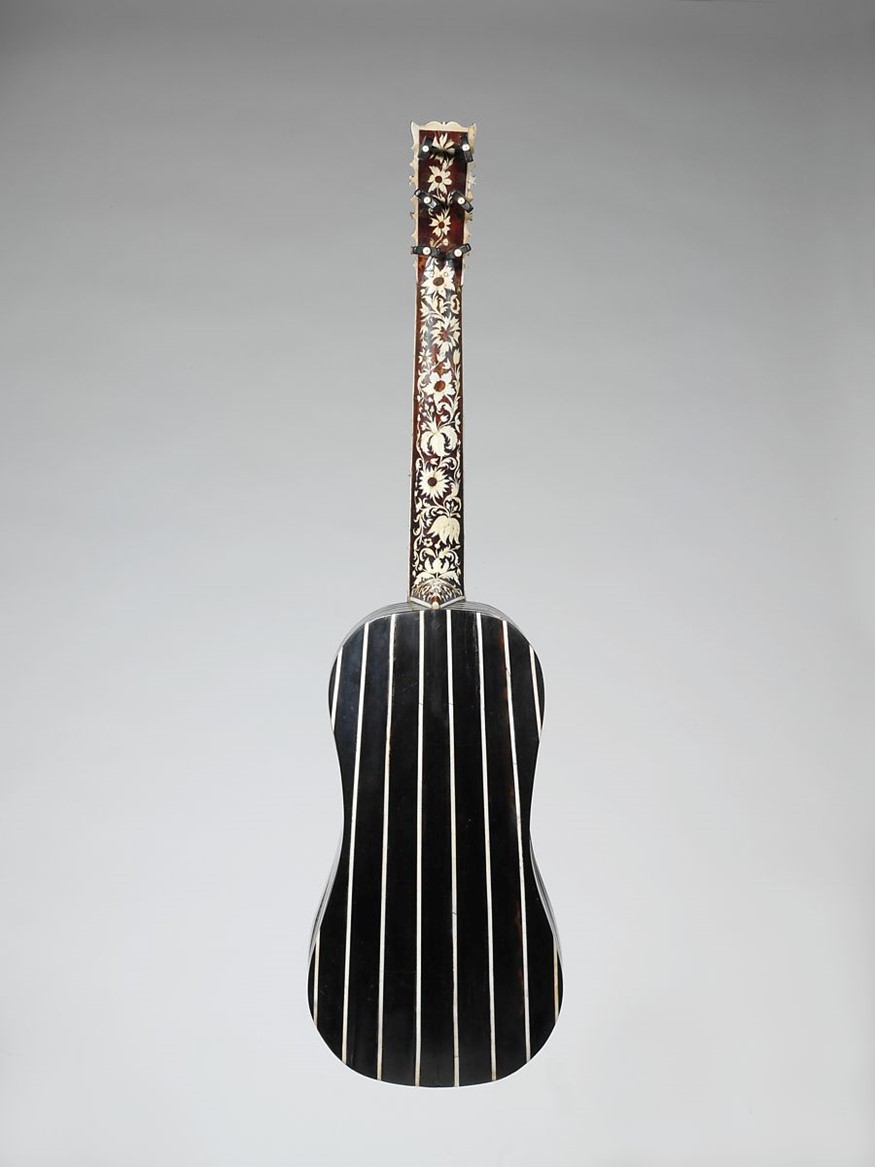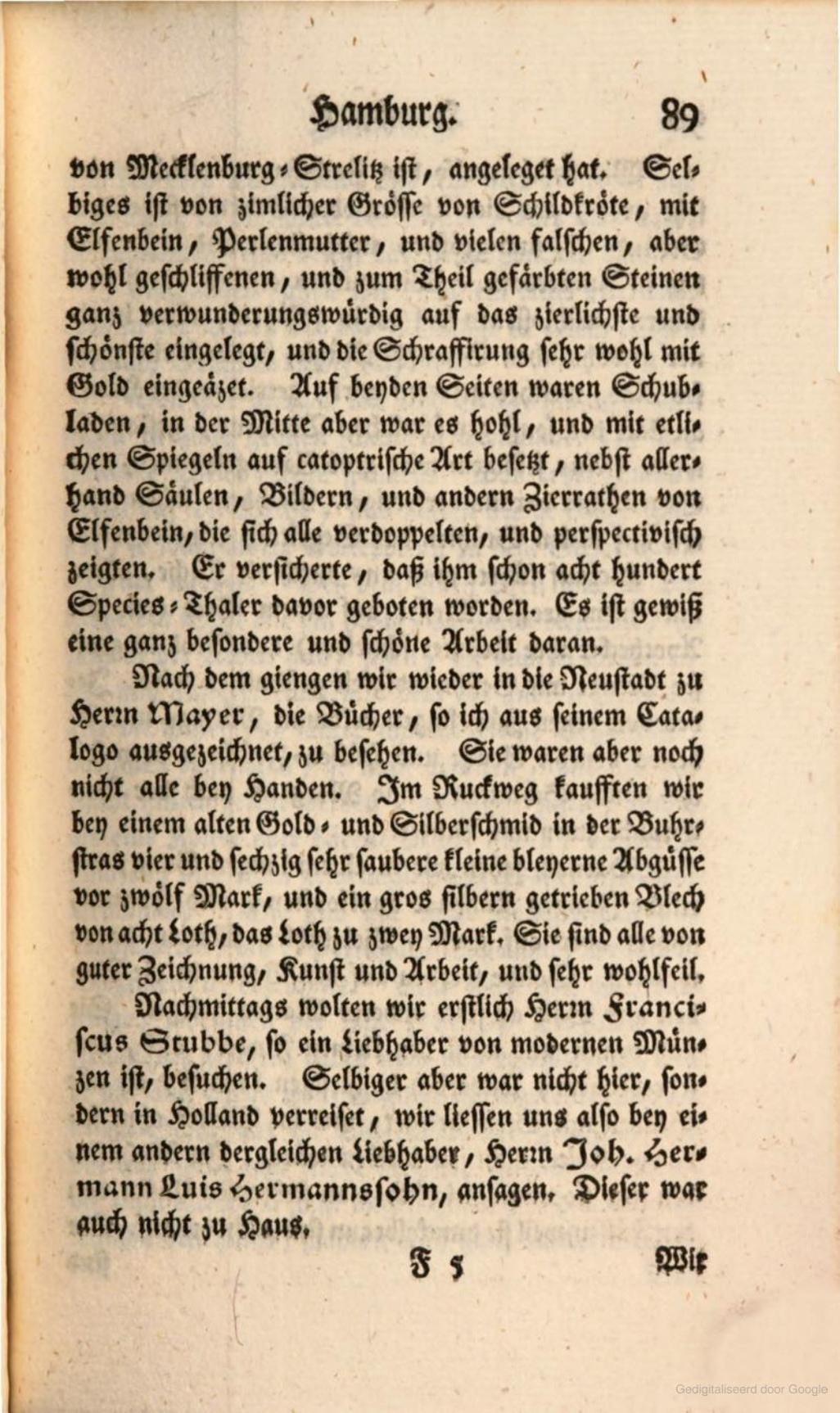Offered by Kollenburg Antiquairs BV
A two-door cabinet standing on four turned feet of solid ivory. The entire cabinet is veneered with tortoiseshell and ivory in première-partie and contre-partie. The cabinet has two large doors, the inner sides of which are also veneered with tortoiseshell and ivory. Behind these doors are twelve drawers: four larger ones at the top and bottom, with eight smaller ones in-between. These drawers can be opened using solid silver pulls. The drawers surround a central open section, which is decorated with a solid ivory Corinthian column aligned with the section’s central axis, flanked by two arches standing upon solid ivory balusters. The section’s “floor” has tortoiseshell and ivory parquetry in a block motif. The section’s inner surfaces are decorated with three mirrors, two of which are oriented diagonally. The section can be removed as a single unit, revealing another twelve smaller drawers behind it. The cabinet’s overall decoration consists of stylised tortoiseshell and ivory flowers, engraved and inlaid with glass and semi-precious stones. The inner and outer doors and sides of the cabinet are decorated with centrally positioned, framed representations of architectural elements, flowers and figures. These representations were inspired by the styles of Daniel Marot (1660/61–1752) and Jean Bérain (1640-1711).
This cabinet is a unique piece in the oeuvre of the musical-instrument maker Joachim Tielke. Although the instrument-makers of Hamburg were not affiliated with a guild, the guild regulation of other guilds would refrain Tielke from crafting other goods than instruments for the free market. However, Tielke made an exception to the rule. A large sumptuous cabinet with ‘tortoise-shell, ivory, mother-of-pearl and many semi-precious but finely cut and partly coloured stone’ was spotted in 1711 by the book collector Zacharias von Uffenbach (1683-1734). He visited Tielke’s shop to buy a guitar and noted in his travel diary (published in 1753) its ‘exceptional beauty’.
Joachim Tielke is considered one of the great instrument makers of the seventeenth and eighteenth centuries. Alongside the members of his large business of luthiers and specialty carvers, he is responsible for an oeuvre of staggering variety renowned for superb craftsmanship and use of luxury materials. The extant violins, guitars, violas da gamba, bell citterns, lutes, and other instruments that bear Tielke’s name number, can today be seen in museums and private collections throughout the world. Tielke’s skill as craftsman, decorative artist and businessman continues to inspire instrument makers, musicians, and historians centuries after his death. He was renowned for the use of precious materials such as ivory, ebony, tortoiseshell, mother-of-pearl and semi-precious stones. This made Joachim Tielke's instruments desirable works of art for the nobility.
Zacharias von Uffenbach
This cabinet was seen on the 24th of February 1711 when Zacharias von Uffenbach (1683-1734) visited the shop of Joachim Tielke to buy a guitar. Von Uffenbach was a book collector who travelled trough Germany Holland and England in 1709-1711 and kept a diary which was published in 1753 under the title Merkwürdige Reisen [strange travels]. We cite Von Uffenbach’s visit (here translated from the German in volume one, page 88,89): The 24th of February in the morning we bought at Sir Tielke’s a finely inlaid lute, for 100 mark is 50 guilders heavy money. He showed us an incomparable cabinet, which was designed by his second son who is now a valet to the duke of Mecklenburg Strelitz. It (the cabinet) is rather large and inlaid amazingly with tortoise-shell, ivory, mother of pearl and many semi-precious (fake) but finely cut and partly coloured stones. Very admirable and graceful inlaid with an engraving very fine finished with gold. On both sides it had drawers but in the middle it had an open space with mirrors and a column. The space was fulle of gems in ivory which doubled in the mirrors. He (Tielke) assured us he was offered 800 Species Thaler for it. It is for sure a very special and beautiful work. (Source: Zacharias Konrad von Uffenbach, Merkwürdige Reise durch Niedersachsen, Holland und Engelland, part 2, (Frankfurt/Main, Leipzig, 1753), pp. 88,89.)
The showpiece cabinet
The centrally placed decoration on the inner and outer sides of the doors and the sides of the cabinet is done in a manner that is typical for Tielke. The foliage around the medallions with scenes containing various figures are clearly inspired by the designs of Daniel Marot (1660/61–1752) and Jean Bérain (1640-1711).
As is the case with many of Tielke’s musical instruments, the oval medallions themselves (located towards the bottom of the doors), as well as the square medallions on the sides, are exact copies of love emblems. These emblems consist of three parts: a short aphorism (the motto), an explanatory text, which may or may not rhyme (the epigram), and an image (the pictura).
Tielke used Daniel de la Feuille’s Devises et emblemes, anciennes et modernes, which was first published in Amsterdam in 1691, as a source of examples for various instruments and this cabinet.
To be precise, Tielke used the German edition, which was first published in Augsburg in 1693. More German editions were published in 1697, 1702 and 1704.
These German editions differ slightly from the Dutch original. These emblem books consisted of picturae and motto’s (pictures with a description and a motto) The Dutch original with texts and motto’s in Dutch, Latin, Italian, Spanish, English, German and French.
The German editions only have Latin, French, Italian and German motto’s. The original picturae of the Dutch edition have been replaced by picturae that seem to be of a higher quality. The difference is very clear when we compare a German example and its Dutch equivalent. The examples used for the cabinet were emblems from the German edition.
The chosen emblemata all deal with the subject of love.
Emblem no 11 on page 4 has as description in the German edition: Zwei Cupidines schmidten auf einen Amboßein gluendes Eisen.
Man muß das Eisen schmidten weil es warm ist.

The same image is used on the pegbox of a theorbo by Tielke dating from 707 (TieWV155, p. 134), now housed in the Hungarian National Museum in Budapest ( inv.no. 1951.44)
On page 49 one finds Emblem number 15: Ein Cupido fanget einen andern mit einem strik German Motto:Liebes Stricke sind annehmlich. In the Dutch edition it says: De listen der liefde zijn aangenaam.
Love snares are pleasant.

This emblem was also used for a lute dating from 1706 (Tiewv 149, p. 129), part of a private collection in Amsterdam, the Netherlands.
On Page 51 emblem number 2 of the emblem book:
Ein Herz auf einer Saul wird von einem Cupidine verwundet: Ich zwinge auch die hohe.
I do also constrain the highs.

Emblem no 14 on page 48 of the emblembook has the German description: Ein Cupido schlagt einen Menschen der ihnen bey einem schonen Weibsbild verstoren wollen. Die Liebe leidet seinem Gesellen. Liefde wil geen metgezel hebben ofwel Love will no companion.

On the right door we see a putto and a man bearing a spear The description and motto in German page 49 no 1. say: Ein Cupido eroffnet einem Reisenden sein Thur. The german motto is: Eine verdachtige Herberg.
Meaning as much as Love is a bad host.

Daniel de la Feuille’s Devises et emblemes, anciennes et modernes was also used as an example for a guitar in Hamburg, TieWV 135: specifically p. 35, no. 15. This guitar is dated 1703 (Hamburg Museum für Kunst und Gewerbe, inv.no. 1921.74)
The flowers, sprigs and vines that decorate the cabinet are typical of the middle and late periods of Tielke’s workshop, as Günther Hellwig describes in his book about this artist. The typical use of inlaid, engraved golden leaves, the so-called Samenfädchen, and the use of rhinestones are only found on Tielke’s most exquisitely worked guitars, such as the example found at Castle Rosenborg in Copenhagen (inv.no. 11-21), which dates from ca. 1703.
The emblems used on this cabinet are all derived from the German edition of De la Feuille’s work, meaning that the cabinet cannot have been built before 1693. Considering that all guitars and lutes for which this book of emblems was used were manufactured between 1703 and 1707, we may assume that the cabinet was also created in this period. At any rate, Von Uffenbach noted its presence in the shop in Hamburg in 1711. Based on this information, it is probable that the cabinet was manufactured around 1703; any date after 1706 is unlikely.
What stands out is that certain motifs which were directly derived from the aforementioned example prints are repeated in the three-dimensional decoration on the inside of the cabinet’s centre section
For example, the characteristic crown on the arch that the putto is stepping through in the image on the outside of the right door and the inside of the left door is repeated in the arches in the cabinet interior’s central section. The somewhat peculiar construction in the central section comprising a three-dimensional, centrally placed single pillar made of ivory is visually reiterated in the decorative scene showing a heart on a pillar on the left door. The ornamental motifs used in the frames around these scenes, which serve to provide the sides and doors of the cabinet with more elaborate decoration, were derived from prints by Daniel Marot and Jean Bérain. Marot’s and Bérain’s designs became widely renowned after they were published in print and distributed internationally around 1700. Although the motifs in the framing decorations were clearly inspired by Marot’s and Bérain’s prints, no single print can be identified from which they were directly copied. It was not unusual for artisans to “cut and paste” various motifs from different prints, recombining them into a new whole and executing this design in a different (and often expensive) material, as has been so masterfully done with ivory and tortoiseshell on this cabinet.
Although the decorations on the cabinet may be indicative of a wedding gift, it is likely that the cabinet was in fact intended to serve as an object of advertisement avant la lettre. In any case, it was on display in Tielke’s shop when Von Uffenbach visited in 1711 to purchase a guitar. Many of Tielke’s guitars and lutes also feature similar love emblems, and it is therefore advisable not to read too much into the use of this symbolism.

A Guitar in the V&A Museum in London. Joachim Tielke, Guitar ca. 1695–99, Metropolitan Museum of Art

Guitar, ca. 1695-99 in the Metropolitain Museum of Art
Joachim Tielke
Not much is known about Tielke and his family. A town fire and war damage destroyed nearly all archived materials that could have told us more about his youth in Königsberg (now Kaliningrad) or his later life in Hamburg.
Research by Günther Hellwig and Alexander Philipczuk (see literature) has nevertheless revealed much about Joachim Tielke’s life and works. Their findings are discussed in detail in Friedemann and Barbara Hellwig’s recent books.
How Joachim and his older brother Gottfried learned the instrument maker’s trade, and whether they could have done so in their birth town of Königsberg to begin with, is unclear. What we do know is that Joachim studied philosophy in Leiden from 1663 to 1666 before settling in Hamburg. It is not certain whether he obtained an academic degree in Leiden, though it is clear that his studies and stay in Leiden influenced his choices for the emblems with which he later decorated his instruments.
We can only guess as to how and why Tielke came to live in Hamburg. The fact is that he settled there in 1666, marrying Catharina Fleisher a year later in St. Peter’s Church. Catharina was the daughter of an instrument maker who had likely moved to Hamburg from the Netherlands. It is unclear whether Tielke worked in the Fleischer workshop, but it is certainly true that the marriage linked him to a well-known family of instrument makers. Not only were his father and brothers-in-law instrument makers, his sister-in-law was also married to one. As a result, there is a clear and close connection between the three most famous names among Hamburg’s instrument makers: Tielke, Fleischer and Gold.
Tielke obtained citizen’s rights from the city of Hamburg, paying 150 marks for the privilege as the son of a non-resident. The fact that he was able to afford this sum and was permitted to become a citizen is evidence that he was already prospering at the time.
In the following years, Joachim and Catharina had many children. Their baptisms were mostly witnessed by members from the Fleischer instrument-maker family (his family-in-law), as well as musicians from the city.
In 1717, the couple celebrated their 50th wedding anniversary. This was a unique milestone, especially at the time, and they were greatly celebrated by their friends. A Festschrift containing texts and poems contributed by friends of the couple was published, which has survived to this day and tells us much about Tielke and his progeny. unfortunately, very little is mentioned about his work, although Tielke is praised as a skilful artificer of the rarest and most exquisite musical instruments and inventor of artworks the likes of which the musical world had never seen before. It is also noted that his sons were skilled at playing said instruments, much to their elderly father’s joy.
These sons are mentioned by name. The second son is important as concerns the cabinet, because Von Uffenbach names him as its designer. Joachim Tielke (II) was born on 15 August 1673, and served as a valet to the widow Duchess Emilie von Mecklenburg-Strelitz. His date of death is unknown.
Tielke’s works
Chief among Tielke’s contributions are the Hamburger Cithrinchen, or bell citterns, instruments that were highly fashionable in Hamburg from around 1650 to 1750. Tielke’s citterns are often lavishly decorated with Laub- und Bandelwerk (leaf and bandwork) and inlaid with expensive materials such as ivory, tortoiseshell, ebony, and mother-of-pearl. On certain pieces, the inlaid pattern reflects, in reverse, that of another instrument, as in the case of a cittern in the Hamburg Museum für Kunst und Gewerbe, whose decorative back and side bouts are the counterpart to those of the cittern at the Metropolitan. The same has been done with the doors, sides and drawers of the showpiece cabinet, which illustrates how this cabinet could have served as an example for customers.
This reverse inlay technique (simultaneously a clever way to save on materials and a reflection of meticulous craftsmanship) is known as intarsia, and can also be seen on a number of Tielke’s baroque guitars. The more elaborately decorated instruments have complex floral inlays that stretch from the back of the instrument along the neck and around the entire pegbox; this pattern is then beautifully reflected in the rosette – cut into a lace pattern in the middle of the tablet. At times, Tielke’s decorations feature a more elaborate, classic iconography, often presenting easy-to-read moralist scenes or epigrammatic messages on banners held up by putti that refer to the role of music as a high art or to love.
The instruments created in Tielke’s workshop in the last decade of the seventeenth century and the first decade of the eighteenth century display strong similarities with the cabinet. In the world of music, Tielke is considered the Stradivarius of guitar makers: his guitars, viols and lutes are of a similarly extraordinary quality as the violins of Stradivarius. The fact that an item of furniture that was previously only known from a travel description by Von Uffenbach can now be added to his oeuvre is a very special thing indeed.
Literature:
Barbara Hellwig, Friedemann Hellwig, Joachim Tielke – kunstvolle Musikinstrumente des Barock, Deutscher kunstverlag 2011.
Friedemann and Barbara Hellwig, Joachim Tielke. Neue Funde zu Werk und Wirkung, Berlin/Munich 2020.
Günther Hellwig, Joachim Tielke: ein Hamburger Lauten- und Violenmacher der Barockzeit, Frankfurt/Main 1980.
Alexander Pilipczuk and Carlos O. Boerner Joachim Tielke: Instrument-Maker and Merchant of Hamburg. Recent Findings about His Education and Professional Life, in The Galpin Society Journal, Apr., 2008, Vol. 61 (Apr., 2008), pp. 129-146
Attachment:
Zacharias Konrad von Uffenbach, Merkwürdige Reise durch Niedersachsen, Holland und Engelland, part 2, (Frankfurt/Main, Leipzig, 1753), pp. 88,89.)


Site by Artimin